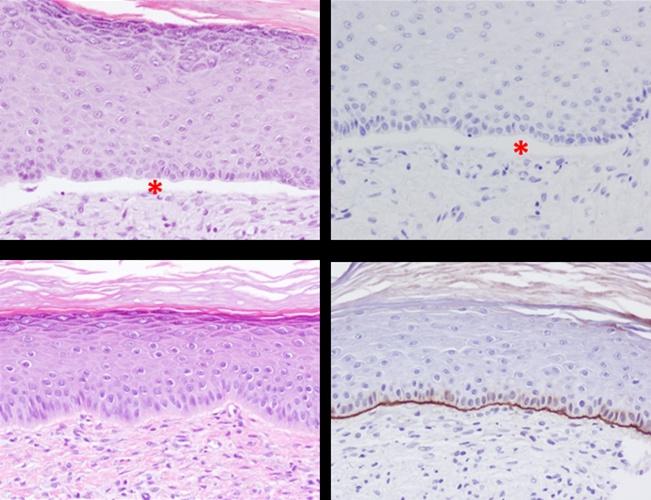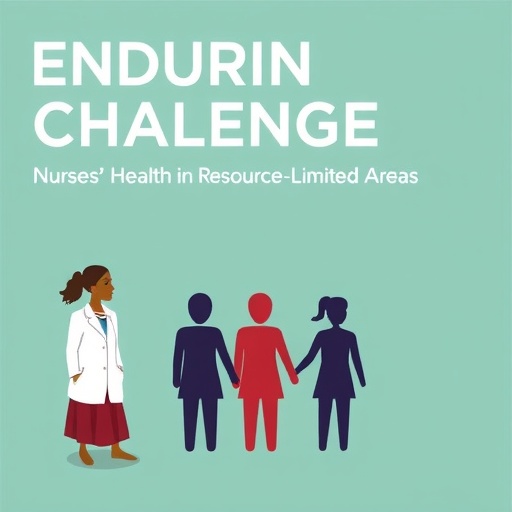The UC3M is participating in this research

Credit: Fernando Larcher
A tissue bioengineering product based on patient cells that have been corrected using genomic editing has been designated as an orphan drug by the European Medicines Agency (EMA) for the treatment of Recessive Dystrophic Epidermolysis Bullosa. The condition, known as Butterfly’s Skin, is characterised by the appearance of fragile skin and mucosal epithelium, ulcers and aggressive skin carcinomas. The work carried out to obtain this designation, sponsored by the Centre for Biomedical Research Network of Rare Diseases (CIBERER, in its Spanish acronym), was coordinated by Fernando Larcher, a member of the group led by Marcela del Río of CIBERER, the Energy, Environment and Technology Research Centre (CIEMAT, in its Spanish acronym) and the Universidad Carlos III de Madrid (UC3M) in collaboration with the Fundación Jiménez Díaz University Hospital Health Research Institute (IIS-FJD, in its Spanish acronym) and the Community Blood and Tissue Centre of Asturias (CCST, in its Spanish acronym).
Recessive Dystrophic Epidermolysis Bullosa is a rare condition characterised by the continuous formation of erosions and blisters on the skin and internal epithelia, as well as fibrosis and various complications, such as pseudosyndactylia (finger fusion) and a high predisposition to develop metastatic epidermoid carcinoma. Management of this condition presents a challenge for health professionals and a great effort on the part of the patients and their families.
This genetic condition is caused by mutations of the COL7A1 gene, which codes for collagen 7, a protein that is essential for the attaching of the epidermis to the dermis. In Spain, there is a high prevalence of a mutation which is localised in the exon 80 gene (it is present in approximately 50% of Spanish patients), which justifies the development of a precision therapy targeted at this region of the gene. Until this product was developed, CRISPR/Cas9 molecular tools lacked the necessary effectiveness for a realistic clinical application in adult stem cells, such as haematopoietic or skin cells. Therefore, these strategies couldn’t compete with conventional gene addition therapies using viral vectors.
This advanced therapeutic product, which uses the CRISPR/Cas9 tool in a highly efficient way, was successfully confirmed by a preclinical model of disease and was published in the Molecular Therapy journal in 2019. This new medicine complies with two of the most sought-after properties of developing new therapies at present: biological security and therapeutic effectiveness.
With this, CIBERER has already promoted 10 orphan drugs which have been designated by the European Medicines Agency (EMA), four of which have also been designated by the American agency (FDA).
EMA designation as an orphan drug has advantages, such as receiving commercial authorisation for 10 years, in which similar products cannot be commercialised, the availability of free or reduced cost assistance protocols, free scientific advice, and exemption of payment for designation. In addition to this, the entities that develop orphan drugs have access to specific EU grants and member state programs.
###
About CIBERER
The Centre for Network Biomedical Research (CIBER) is a consortium dependent on the Carlos III Health Institute (The Spanish Ministry of Science, Innovation and Universities) and is co-funded by the European Regional Development Fund (ERDF). In its Rare Diseases research area (CIBERER), CIBER is the reference centre in Spain for the research of rare diseases. Its main aim is to coordinate and promote a basic, clinical and epidemiological research. It also encourages research in laboratories to reach out to sufferers of the condition and provide scientific answers to questions that arise from medical staff and patient interactions. CIBER is made up of a group of more than 700 professionals and integrates 60 research groups. It also relies on 18 linked clinical groups.
http://www.
About the UC3M
The UC3M is a Spanish public university which excels in teaching, research and innovation. It ranks 34th globally in the QS Top 50 Under 50 ranking and is featured in the Times Higher Education (THE) 150 Under 50. It is the top university in Spain and third in Europe for the number of students participating in the Erasmus Programme. It has more than 870 agreements with universities from 56 countries, among which are some of the best in the world, according to Shanghai Ranking’s’ Academic Ranking of World Universities. 20% of the students at the UC3M are international students. The UC3M has numerous accreditations and quality distinctions, such as the EUR-ACE label in the field of Engineering and an AACSB accreditation in Business and Finance programmes, among others.
http://www.
Media Contact
Javier Alonso
[email protected]
Original Source
https:/




